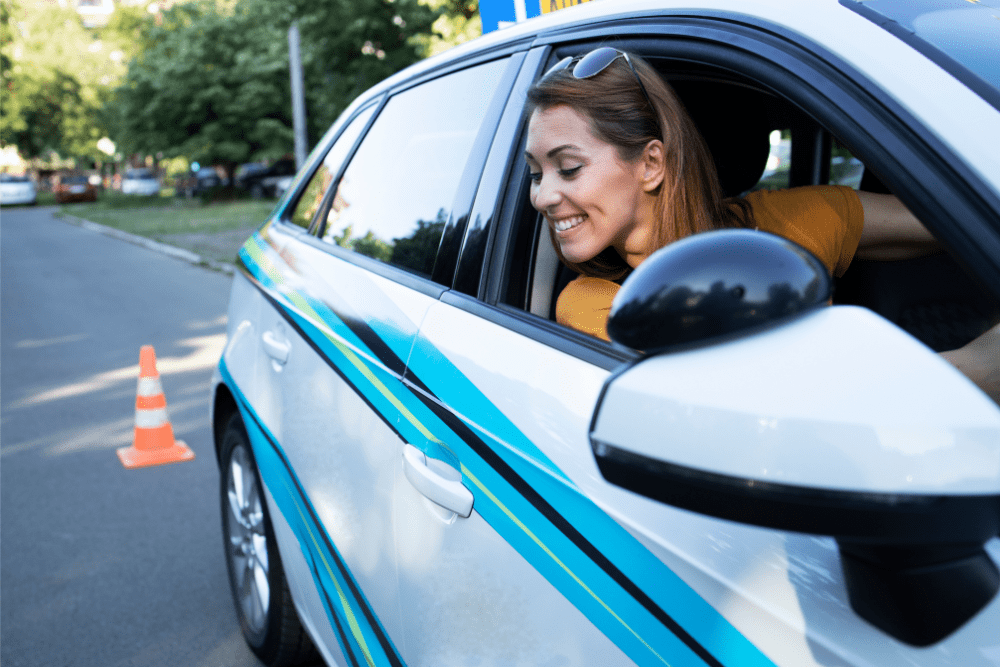
- The Savvy Promise
At Savvy, our mission is to empower you to make informed financial choices. While we maintain stringent editorial standards, this article may include mentions of products offered by our partners. Here’s how we generate income.
Reverse parallel parking is perhaps the most infamous driving manoeuvre worldwide in terms of its difficulty. According to a survey from October 2023 by Budget Direct, 57% of all respondents reported feelings of stress or anxiety related to parallel parking. So, how do you do it? We’ve broken down the steps for a successful parallel park to help you approach it with more confidence, so read all about it with Savvy today!
The steps involved in reverse parallel parking
It’s important to learn the process of parallel parking inside out if you’re looking to master the manoeuvre. These steps are:
- Find a suitable space: look for a spot that's at least one metre longer than your car. This will give you ample space to manoeuvre comfortably. Once you find one, turn on your left indicator to signal your intention to park.
- Pull up alongside the car in front: slowly drive past the car in front of the empty space, aiming to position your car half a metre to a metre away from it. According to RACQ, you should aim to line up your car’s front wheel with the wing mirror of the car beside you.
- Blind spot check: perform a check over your left shoulder and check your wing mirrors and blind spots for any approaching vehicles or cyclists. Once the coast is clear, slowly begin to reverse.
- Reverse and steer: reverse your car until the rear of the car in front of your park appears in your back window. Once you see the rear, turn your wheel counterclockwise (to the right) until it locks, angling the rear of your car towards the curb. While reversing, keep checking your mirrors and blind spots for any hazards.
- Straighten the wheel: when you see the bumper of the car in front lining up with your left wing mirror, start turning your steering wheel to the right. This will start aligning your car parallel to the curb.
- Complete the park: continue reversing slowly and making small adjustments to your steering wheel as needed to ensure your car is positioned parallel to the curb and centred in the parking space.
Knowing when and where to practice your parking
Everyone knows that practice makes perfect, which is certainly the case when it comes to parallel parking. According to Eclipse Driving School, it’s crucial to find an environment which provides as little stress as possible. This should be one where there’s plenty of space to park without any major risk of hitting another car or hindering other vehicles.
Some of the most common places to practice reverse parallel parking are spacious, empty carparks (which have the benefit of distinct line marking) and quiet streets with wide roads and few cars parked. If you’re practicing in an area without many cars or marked lines, it may be worth bringing cones along to help guide you into parks more effectively.
The car technology that could help you reverse parallel park
Advancements in technology have meant that drivers now receive more support than ever when it comes to reverse parallel parking. Some of the safety features that can assist you in executing the manoeuvre include:
- Automatic parallel parking: this feature uses sensors and cameras to detect a suitable parking space and steers the car into the spot while you control the accelerator and brake pedals. As the name suggests, this is the most directly helpful feature, as it takes some of the stress and complexity off the driver.
- Reversing camera: a reversing camera provides a live video feed of the area directly behind your car displayed on the dashboard screen. This gives you a clear visual of your car's position relative to the curb and parked cars, helping you judge the distance and alignment during the manoeuvre.
- Front and rear collision sensors: sensors at the front and back of the vehicle detect potential obstacles, typically emitting audible warnings as you get closer. These sensors can help you avoid making contact with the parked cars in front and behind you during the reversing and manoeuvring stages. They provide an extra layer of caution, especially when judging tight spaces.
- Autonomous Emergency Braking (AEB): this safety system uses sensors to detect an imminent collision and automatically applies the brakes to avoid a crash or minimise its impact if it doesn’t receive any input from the driver. While not directly designed for parking, AEB can act as a safety net in case of misjudgement during reversing.
It's important to note that none of the above features are a total substitute for careful manoeuvring and shouldn't be relied upon solely while parking. Even automatic parallel parking still requires you to work the pedals and brakes, meaning it's not all out of your hands.
If you’re in the market for a new car with safety features to help you parallel park more effectively, you can compare a wide variety of car finance options right here with Savvy today.
Did you find this page helpful?
This guide provides general information and does not consider your individual needs, finances or objectives. We do not make any recommendation or suggestion about which product is best for you based on your specific situation and we do not compare all companies in the market, or all products offered by all companies. It’s always important to consider whether professional financial, legal or taxation advice is appropriate for you before choosing or purchasing a financial product.
The content on our website is produced by experts in the field of finance and reviewed as part of our editorial guidelines. We endeavour to keep all information across our site updated with accurate information.
Approval for car loans is always subject to our lender’s terms, conditions and qualification criteria. Lenders will undertake a credit check in line with responsible lending obligations to help determine whether you’re in a position to take on the loan you’re applying for.
The interest rate, comparison rate, fees and monthly repayments will depend on factors specific to your profile, such as your financial situation, as well others, such as the loan’s size and your chosen repayment term. Costs such as broker fees, redraw fees or early repayment fees, and cost savings such as fee waivers, aren’t included in the comparison rate but may influence the cost of the loan. Different terms, fees or other loan amounts may result in a different comparison rate.







